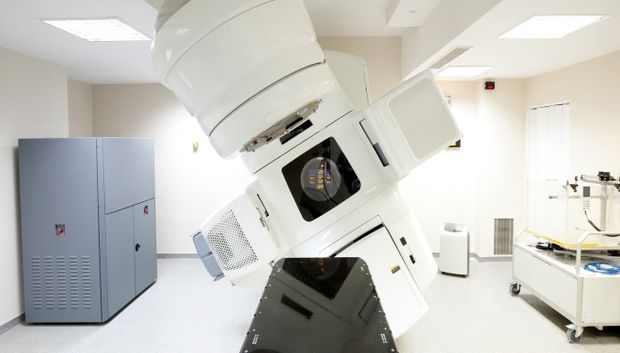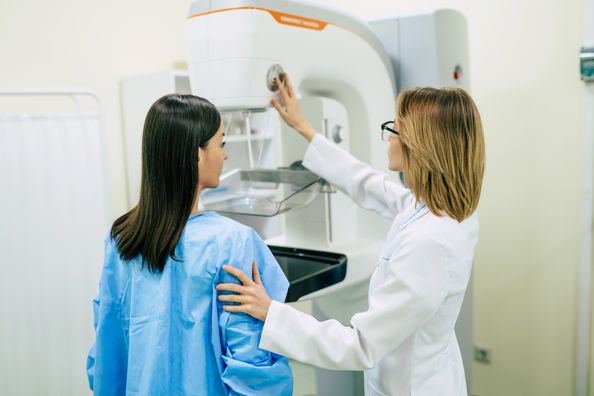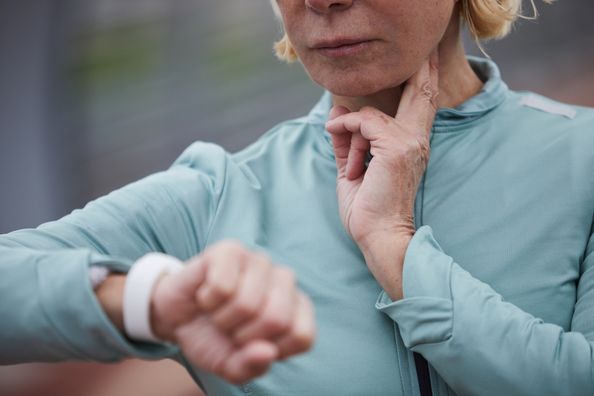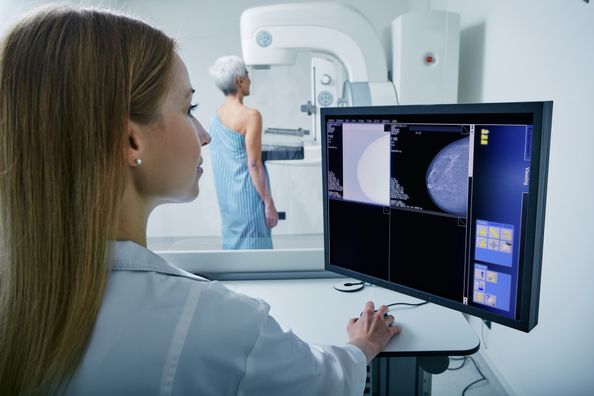What is External Beam Radiation Therapy?
External beam radiation therapy, the most widely used type of radiation therapy, comes from a machine (linear accelerator) that aims radiation at the specific spot that is affected with cancer. The machine is large and may be noisy. It does not touch you, but rotates around you, sending radiation to your body from many directions.
External beam radiation therapy is a local treatment, meaning that the radiation is aimed only at a specific part of your body. For example, if you have lung cancer, you will get radiation to your chest only and not the rest of your body. External beam can also treat large areas of the body as well as treat more than one area such as the main tumor and nearby lymph nodes.
How often will I get external beam radiation therapy?
Most people get external beam radiation therapy once a day, 5 days a week, Monday through Friday. Treatment lasts from 2 to 8 weeks, depending on the type of cancer you have and the goal of your treatment. The time between your first and last radiation therapy sessions is called a course of treatment.
What happens before my first external beam radiation treatment?
The planning process for external beam radiation therapy has many steps and may take several days to complete. During the planning process, you will have a physical exam, talk about your medical history, and likely have imaging tests. Your doctor or nurse will discuss external beam radiation therapy, its benefits and side effects, and ways you can care for yourself during and after treatment. You can then choose whether to have external beam radiation therapy.
If you agree to have external beam radiation therapy, you will be scheduled for a treatment planning session called a simulation. At this time:
- A radiation oncologist and radiation therapist will define your treatment area (also called a treatment port or treatment field). This refers to the places in your body that will receive radiation. You will be asked to lie very still while X‑rays or scans are taken to define the treatment area.
- The radiation therapist will then put small marks (tattoos or dots of colored ink) on your skin to mark the treatment area. You will need these marks throughout the course of radiation therapy. The radiation therapist will use them each day to make sure you are in the correct position. Tattoos are about the size of a freckle and will remain on your skin for the rest of your life. Ink markings will fade over time. Be careful not to remove them and make sure to tell the radiation therapist if they fade or lose color.
- You may need a body mold. This is a plastic or plaster form that helps keep you from moving during treatment. It also helps make sure that you are in the exact same position each day of treatment.
- If you are getting radiation to the head, you may need a mask. The mask has air holes, and holes can be cut for your eyes, nose, and mouth. It attaches to the table where you will lie to receive your treatments. The mask helps keep your head from moving so that you are in the exact same position for each treatment.
What are the benefits and risks of external beam radiation therapy?
External radiation therapy is an outpatient procedure. Compared to other, more invasive techniques, external radiation treatment sessions are:
- Short
- Painless
- Low-risk
External radiation treatment may require an investment of time — a course can involve daily sessions over several weeks. Common side effects of external beam radiation therapy are dependent on the treatment site and will be discussed with each individual patient.
To speak to a nurse navigator to determine if external beam radiation therapy is right for you please call 1 – 855-4DMG-ONC (855−436−4662).
Health Topics:







